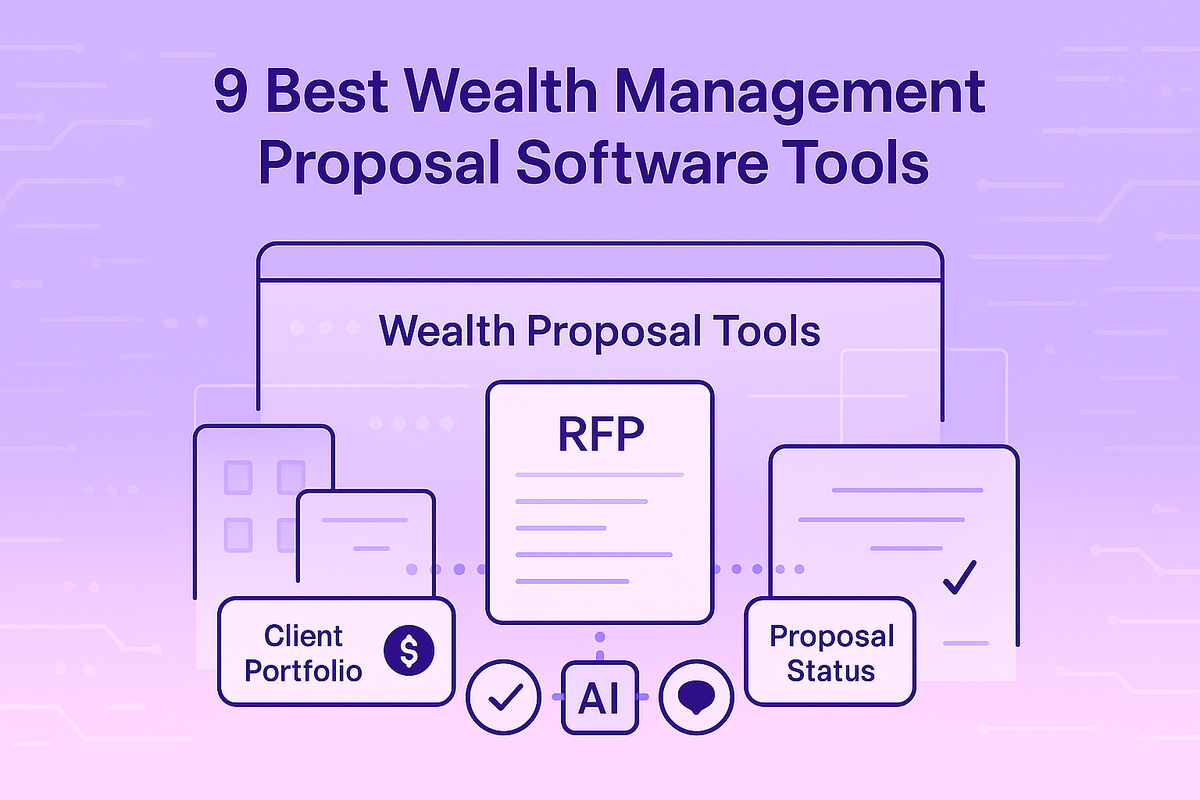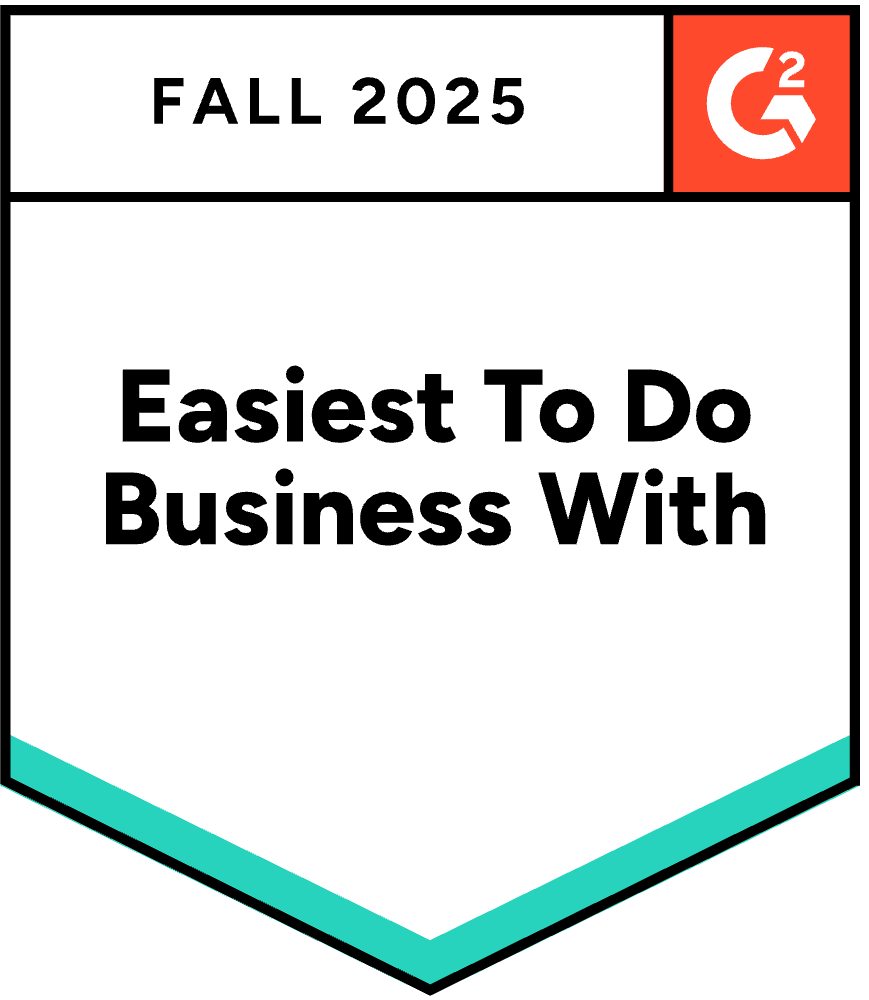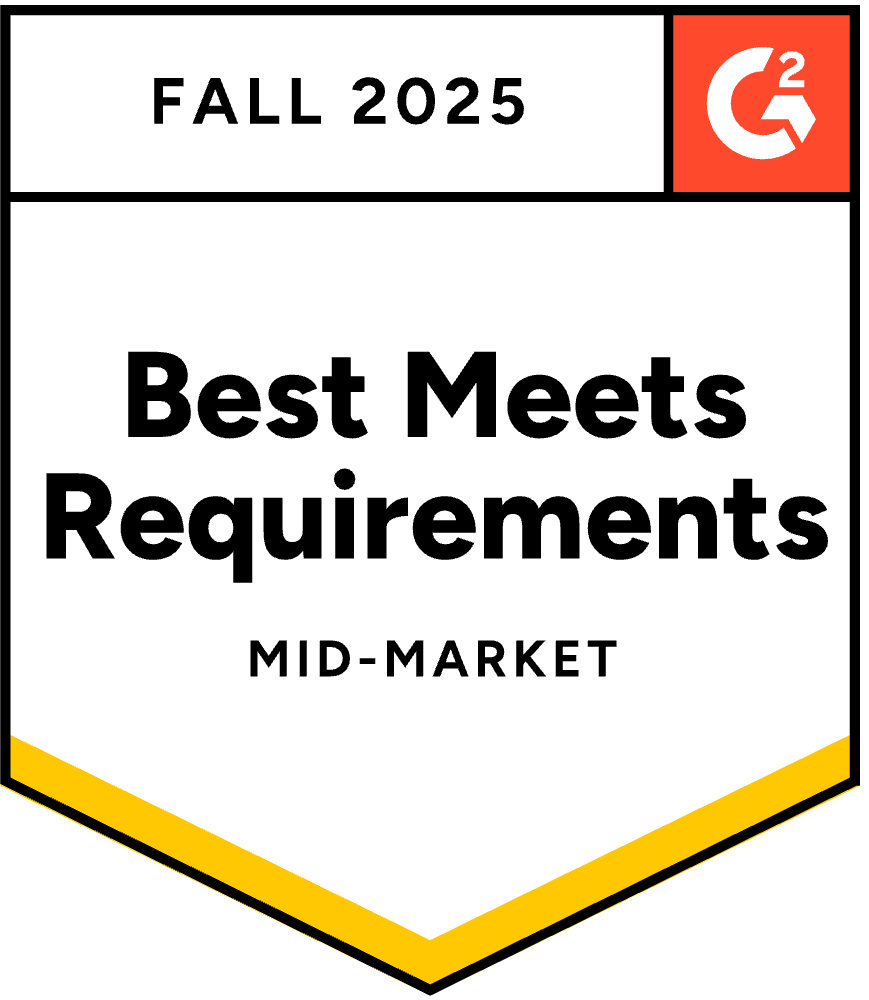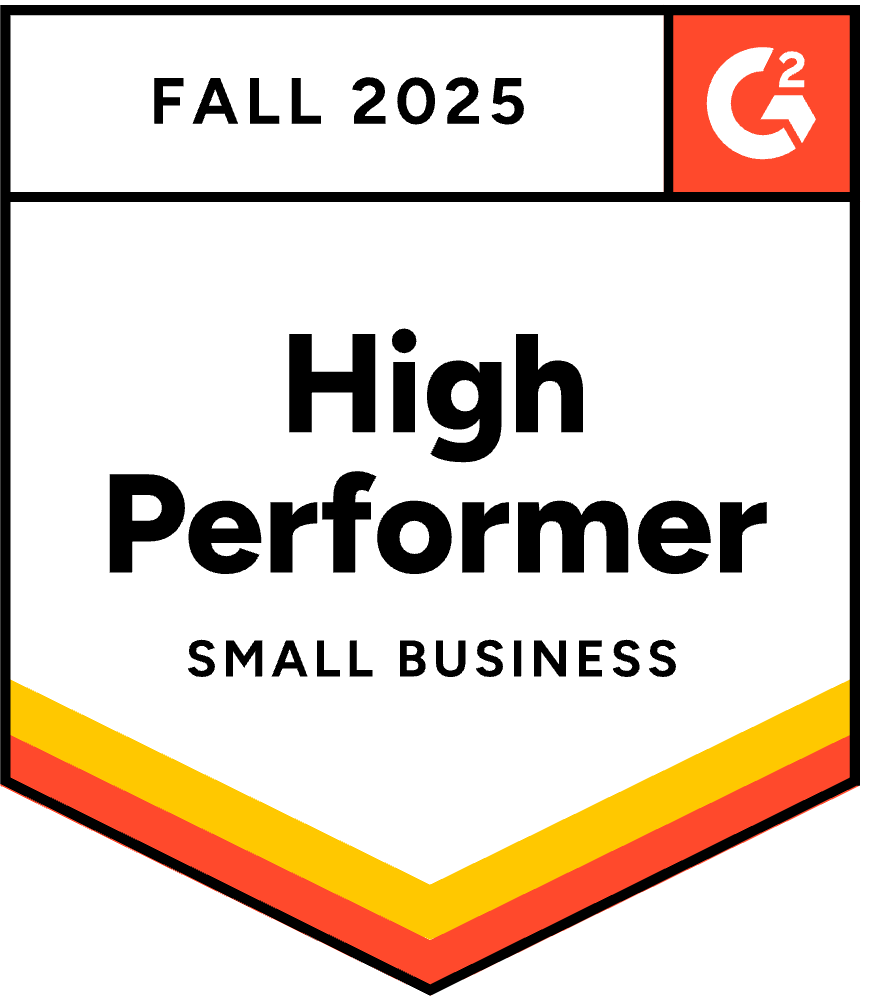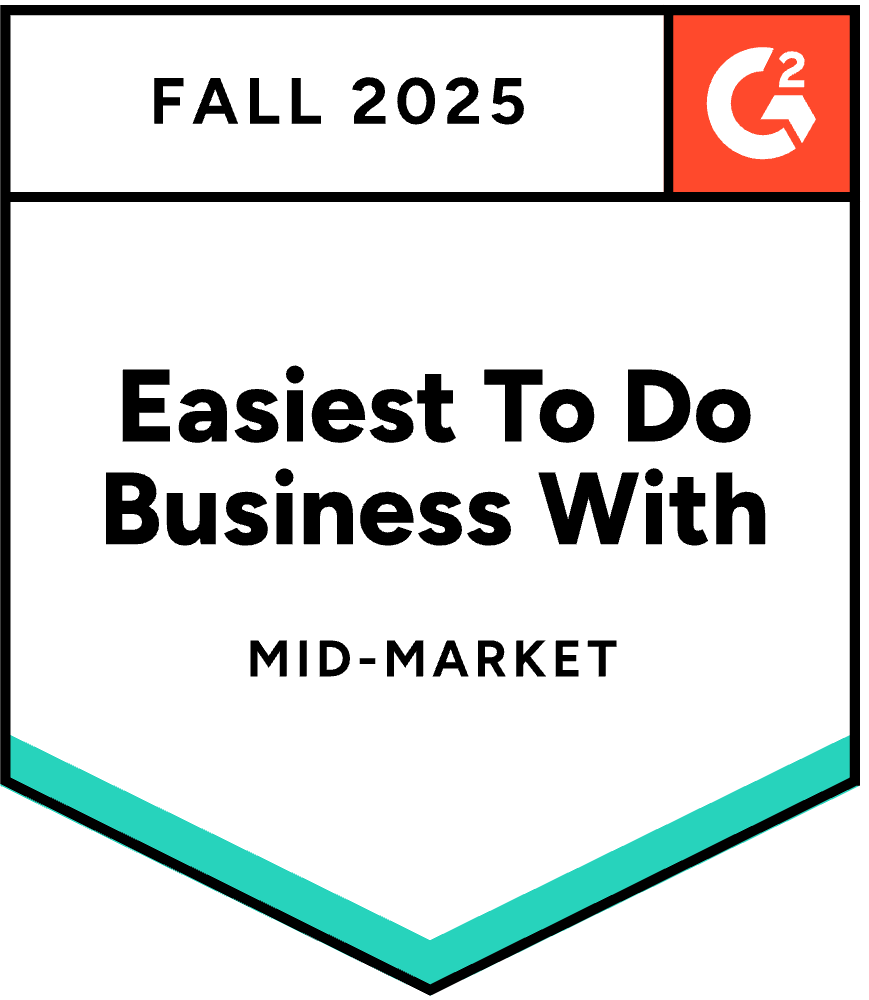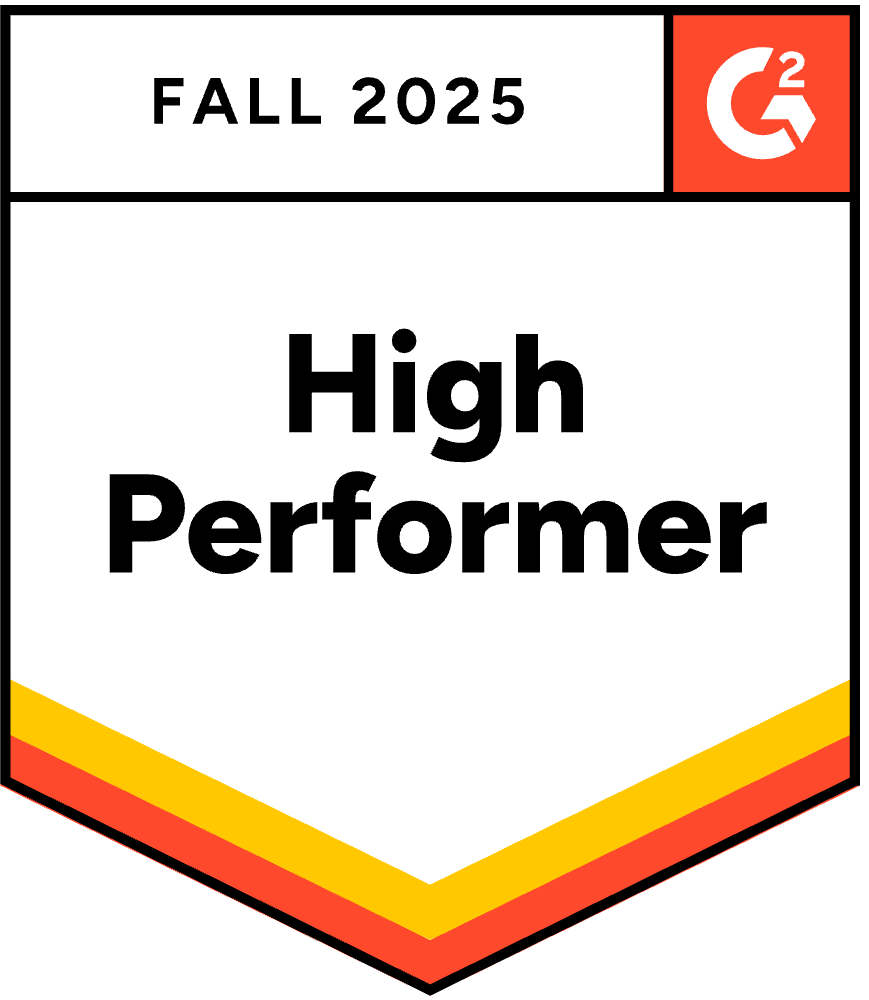Top 5 AI Proposal Writers to Close Deals Faster
November 12, 2025
By
Evie Secilmis

Your sales team's most valuable asset is their expertise, not their ability to search through folders. Yet, how much of their time is spent on the administrative heavy lifting of responding to RFPs? Every hour they spend on tedious, repetitive tasks is an hour they aren't spending on strategy or building client relationships. An AI proposal writer is designed to flip that equation. It handles the initial draft, finds the most accurate answers, and ensures consistency across every document. This allows your experts to focus on high-value work: personalizing the pitch, highlighting your unique value, and ultimately, closing more business. Here’s how to find the right tool for your team.
Key Takeaways
- Focus AI on the first draft, not the final word: Use an AI proposal writer to automate the time-consuming parts of the process, like finding approved answers and structuring the document. This frees your team to focus on the high-value work of strategy, personalization, and relationship building.
- Implement a human-led quality check: AI is a powerful assistant, but it isn't a substitute for your team's expertise. Always have a subject matter expert review and refine the AI-generated content to ensure accuracy, strategic messaging, and the perfect tone.
- Choose a tool that fits your existing workflow: The right solution should integrate seamlessly with the tools you already use, like your CRM and cloud storage. Prioritize platforms with strong security protocols to ensure your company and client data remains protected.
What is an AI Proposal Writer?
Think of an AI proposal writer as your team's new secret weapon for responding to RFPs and other sales documents. It's a smart software that uses artificial intelligence to help you create compelling business proposals, but much faster than you could on your own. Instead of starting every document from scratch, these tools automate the heavy lifting. They can generate content, structure the proposal, and pull in the most relevant data from past documents and your company's knowledge base. The goal isn't to replace your team's expertise but to give them a powerful assistant that handles the repetitive, time-consuming parts of the job. This frees up your experts to focus on strategy, customization, and building relationships to close more deals.
How Does an AI Proposal Writer Work?
At its core, an AI proposal writer works by understanding language and context. First, you feed it a document, like a Request for Proposal (RFP). The AI reads and analyzes the request, breaking down the questions and requirements. Then, using generative AI, it taps into your company's secure knowledge library—a collection of past proposals, product information, and approved answers—to draft responses. It finds the best-fitting content for standard or repetitive questions, generating a solid first draft in minutes. From there, your team can easily edit and refine the AI-generated text, ensuring the final proposal perfectly matches the project's needs and your company's unique voice.
Key Components of AI Proposal Software
When you look under the hood of AI proposal software, you'll find a few key components working together. A core function is intelligent information import, which allows the tool to quickly analyze RFPs and other documents. From there, auto-response generation kicks in, using your knowledge base to answer common questions automatically. Many tools also offer content recommendations, suggesting the strongest possible answers for specific queries. Powering all of this is Natural Language Processing (NLP), a type of AI that helps generate human-like text. These features work in concert to gather information from multiple sources, saving time and making your proposal more compelling.
The Pros and Cons
Like any tool, AI proposal writers come with a set of pros and cons. The biggest advantage is a massive gain in speed and efficiency. Teams can respond to more opportunities and reduce the tedious work that leads to burnout. These tools also improve consistency by drawing from a single source of truth for all answers. On the flip side, AI isn't infallible. The content it generates can sometimes contain factual errors or misunderstandings, especially with complex or nuanced questions. That's why human review is absolutely essential. Think of the AI as a co-pilot, not the pilot. It gets you 90% of the way there, but a human expert should always be in the driver's seat to fact-check and add the final strategic polish.
Must-Have Features in an AI Proposal Writer
Not all AI proposal writers are created equal. When you’re looking for a tool to help your team close deals faster, you need to focus on features that actually move the needle. The right software goes beyond just filling in blanks; it becomes a core part of your sales process, saving you time, ensuring accuracy, and giving you a competitive edge. From generating content instantly to integrating with the tools you already use, here are the essential features to look for.
Generate Content Automatically
The most fundamental feature of an AI proposal writer is its ability to create content for you. Instead of starting from a blank page, you can get a solid first draft in minutes. These tools use intelligent algorithms to write content, structure information, and tailor documents for specific clients or projects. This means your team can spend less time on tedious writing and more time on strategy and building client relationships. The AI can handle the heavy lifting of drafting standard sections, allowing your team to focus on personalizing the proposal and highlighting your unique value proposition. It’s about working smarter, not harder, to produce high-quality proposals at scale.
Manage Templates Smarter
Consistency is key in branding and sales. An AI proposal writer should help you maintain a uniform voice and style across all your documents. The best platforms allow you to create and manage a library of pre-approved templates and content blocks. AI can then pull relevant information from past proposals, RFPs, or your internal knowledge base to populate these templates quickly. This ensures that standard sections like company history, case studies, and legal disclaimers are always up-to-date and accurate. It streamlines the creation process and guarantees every proposal that goes out the door is polished, professional, and perfectly on-brand.
Connect With Your Existing Tools
Your proposal software shouldn't operate in a silo. To create a seamless workflow, look for a tool that integrates with your current tech stack. A great AI proposal writer connects with other business tools you rely on daily, like your CRM (think Salesforce or HubSpot), project management software, and cloud storage. This connectivity allows for a smooth flow of information, from pulling client data directly into a proposal to updating a deal's status in your CRM once the proposal is sent. These integrations eliminate manual data entry, reduce the risk of errors, and give your team a holistic view of the sales pipeline without having to jump between different applications.
Keep Your Data Secure and Compliant
When you’re handling sensitive client information and proprietary business data, security is non-negotiable. A trustworthy AI proposal writer must have robust security features to protect your information. This includes data encryption, secure access controls, and compliance with industry standards like SOC 2 and GDPR. For companies with stringent security requirements, some tools even offer on-premise deployment options, which allow you to keep sensitive information secure on your own servers. Before committing to a platform, be sure to review its security policies and certifications to ensure your data—and your clients' data—is in safe hands.
Track Your Performance with Analytics
Sending a proposal is just the first step. What happens next is what truly matters. Modern AI proposal writers provide valuable insights into how your clients interact with your documents. Analytics features can show you who opened the proposal, which sections they spent the most time on, and when they viewed it. Many platforms can also track proposal status in real-time, sending you notifications for key events. This data is incredibly powerful, as it helps you time your follow-ups perfectly and tailor your conversation to the client’s specific interests. Over time, these analytics can reveal trends that help you refine your proposals and improve your win rate.
Maintain Quality Control
While AI is a powerful assistant, it shouldn't have the final say. The human touch remains essential for creating strategic, compelling proposals that resonate with clients. A critical feature of any AI-powered workflow is the ability for human oversight and quality control. The content generated by AI should always be reviewed and edited by a human to check for accuracy, clarity, and tone. Your team’s expertise is what turns a good proposal into a great one. The best AI tools are designed to augment your team’s skills, not replace them, by providing a strong foundation that your experts can then refine and perfect.
A Look at the Top AI Proposal Writing Tools
Now that you know what to look for, let's check out some of the top AI proposal writers on the market. Each tool has its own strengths, so think about which features align best with your team’s specific challenges and goals. Whether you need to answer complex RFPs or create visually stunning sales quotes, there’s a solution here for you.
HeyIris.ai
If your team spends hours digging through old documents for answers to RFPs, RFIs, and security questionnaires, Iris is for you. As an AI-powered deal desk, its main job is to automate the most time-consuming parts of the process. An AI proposal assistant like Iris generates first drafts in minutes and instantly finds company-approved answers, freeing your team to focus on strategy and personalization. It connects to all your systems—like Google Drive, SharePoint, and Slack—to build a single source of truth. Iris even proactively flags outdated content, so your information is always accurate and consistent, helping you improve win rates and respond to more deals.
Proposify
Proposify is a great all-around tool for teams that want to streamline their entire proposal workflow. It offers a user-friendly interface that allows teams to create, send, and track proposals easily. You can build a library of pre-approved templates and content snippets, which helps maintain brand consistency while speeding up creation. One of its standout features is the detailed analytics; you can see when a client opens your proposal, which sections they spend the most time on, and when they sign. This insight is incredibly valuable for timing your follow-ups and understanding what resonates with your prospects, helping you close deals faster.
PandaDoc
For sales teams that live inside their CRM, PandaDoc is a fantastic choice. Its biggest strength is how it integrates seamlessly with various CRM systems, making it easier for sales teams to generate proposals directly from their existing workflows. This means you can pull customer data directly into your proposals, reducing manual entry and minimizing errors. PandaDoc also offers legally binding e-signatures and a wide range of templates for different documents, from proposals and quotes to contracts. It’s a solid solution for managing the full lifecycle of your sales documents without ever leaving your favorite tools.
Copy.ai
Sometimes, the hardest part of a proposal is just finding the right words. If your team struggles with writer’s block, Copy.ai can be a huge help. While it’s not a dedicated proposal management platform, it leverages AI to help users generate compelling copy for proposals, saving time and enhancing creativity. You can use it to draft executive summaries, write persuasive product descriptions, or even brainstorm different angles for your pitch. It’s a versatile tool that can support your content creation efforts across the board, ensuring your proposals are always polished and professional.
Qwilr
First impressions matter, and Qwilr helps you make a great one. This tool focuses on creating beautiful, interactive, and web-based proposals that stand out from the typical PDF. Qwilr allows users to create visually appealing proposals that can include interactive elements like embedded videos, ROI calculators, and configurable pricing tables. This makes your proposals more engaging for potential clients and gives them a modern, professional feel. Because the proposals are web pages, they are mobile-responsive and provide detailed analytics on client engagement, helping you see exactly how your prospects interact with your pitch.
AI Proposal Writers in Action: Industry Use Cases
AI proposal software isn't just for one type of business. Teams across different sectors are finding unique ways to use these tools to handle their specific challenges. From crafting complex government bids to sending quick quotes for freelance projects, AI is becoming a go-to resource for creating winning documents. The common thread is a need for speed, accuracy, and personalization without burning out your team. AI helps automate the tedious parts of proposal writing—like finding the right data, formatting documents, and ensuring compliance—so your experts can focus on high-value strategy and building client relationships.
Seeing how other professionals use this technology can spark ideas for your own workflow. The problems you face, like inconsistent messaging or spending too much time on low-value bids, are likely shared by others in your field. Whether you’re in a fast-paced sales environment that requires quick turnarounds or a detail-oriented engineering firm where precision is paramount, there’s a use case that fits your needs. Let’s look at how different industries are putting AI proposal writers to work to improve their win rates and reclaim valuable time.
For Sales and Marketing Teams
For sales and marketing pros, speed and personalization are everything. You need to get tailored proposals to potential clients quickly before a competitor does. AI proposal generators are a perfect fit, helping you automatically create and improve business proposals by pulling the right product details, case studies, and pricing for each specific opportunity. Instead of starting from scratch every time, you can generate a solid first draft in minutes. This frees you up to spend more time understanding your client's needs and personalizing the final pitch to show you’ve been listening.
For Architecture, Engineering, and Construction
In the AEC world, proposals are incredibly visual and data-heavy. You need to include the right project photos, schematics, and team bios to win a bid. AI-powered tools, especially those integrated with a Digital Asset Management (DAM) system, can be a game-changer. These platforms use AI to automatically tag images and project data, making it easy to find the perfect assets for your next proposal. This ensures every document is packed with relevant, compelling proof of your firm’s expertise, helping you streamline proposal development without the manual effort of digging through folders.
For Consulting Services
Consultants sell expertise, and their proposals must reflect that. AI helps consulting teams work faster and more strategically by handling the initial assembly of a proposal. The software can pull relevant data, methodologies, and past project successes from your knowledge base to build a strong foundation. This allows consultants to dedicate their brainpower to what really matters: crafting a unique strategy, defining the project scope, and outlining the value they’ll deliver to the client. It turns proposal writing from a time-consuming administrative task into a strategic activity.
For Government Contracting
Responding to government RFPs is notoriously complex. The documents are dense, the requirements are strict, and the stakes are high. AI is uniquely suited to handle this challenge. It can read and understand RFPs, automatically identifying key requirements, deadlines, and compliance needs. An AI-powered platform like Iris can then pull pre-approved, accurate content from your library to answer each section, ensuring nothing gets missed. This dramatically reduces the risk of human error and helps you create compliant, competitive bids for opportunities like those found through GovSpend.
For Nonprofit Organizations
Nonprofits run on passion, but often on tight budgets and with small teams. AI proposal writers help these organizations do more with less. When it comes to writing grant proposals or sponsorship requests, AI can generate a strong first draft that outlines the organization's mission, program details, and impact metrics. This draft can then be edited and refined by the team to add the human touch and storytelling that inspires donors. It streamlines the administrative side of fundraising, giving the team more time to focus on their mission-driven work.
For Freelancers and Independent Contractors
When you’re a freelancer, every minute you spend on administrative work is a minute you’re not getting paid. AI proposal writers are like a secret weapon for solopreneurs. These tools help you generate winning proposals for freelancing jobs in a fraction of the time it would take to write one from scratch. You can create professional, persuasive proposals that help you stand out and win more projects. This efficiency allows you to respond to more opportunities and spend your valuable time on the creative or technical work your clients are actually paying you for.
Get the Most Out of Your AI Proposal Writer
Choosing the right AI proposal writer is a huge step, but the real magic happens when you integrate it thoughtfully into your team’s workflow. Simply having the tool isn’t enough; you need a plan to make it a core part of your sales process. Think of it less as a new piece of software and more as a new, highly efficient team member. To truly see a difference in your win rates and response times, you need to be strategic.
This means setting clear goals, getting your team excited and properly trained, and establishing new processes that play to the strengths of both your people and your AI. It’s about creating a system where the AI handles the heavy lifting—like pulling approved content and structuring first drafts—so your team can focus on the high-value work of strategy, personalization, and building client relationships. The following steps will help you build that system and ensure you’re getting a real return on your investment.
Manage Your Time and Resources
The biggest immediate benefit of an AI proposal writer is the time it gives back to your team. These tools are designed to automate the most repetitive parts of proposal creation, from finding the right answers to formatting the document. This allows you to shift your team's focus from tedious administrative work to more strategic activities. Instead of spending hours searching for content, your proposal managers can spend that time tailoring the narrative to the client’s specific needs. Your sales reps can invest more energy in nurturing leads and talking to customers. By automating the first draft, you free up your most valuable resources—your team’s expertise and creativity—to do the work that actually closes deals and builds lasting customer relationships.
Prioritize Data Privacy and Security
Proposals, RFPs, and security questionnaires are filled with sensitive information—both yours and your client’s. When you introduce an AI tool into this process, you have to be confident that your data is protected. Before committing to a platform, dig into its security measures. Look for a solution that offers robust data encryption, secure cloud infrastructure, and clear policies on how your information is used and stored. A trustworthy AI partner will be transparent about its security protocols and compliance certifications. This isn’t just about protecting your company; it’s about maintaining the trust you’ve built with your clients. Make data security a non-negotiable part of your evaluation process.
Get Your Team On Board
A new tool is only effective if your team actually uses it. Successful adoption starts with clear communication and comprehensive training. From the beginning, frame the AI proposal writer as a tool that will make their jobs easier, not replace them. Highlight how it will eliminate tedious tasks and help them hit their targets more effectively. Provide hands-on training sessions and easy-to-access resources so everyone feels confident using the new software. A smooth change management process is key. When your team understands the "why" behind the change and feels supported, they’ll be more likely to embrace the tool and unlock its full potential.
Establish a Quality Assurance Process
AI is an incredibly powerful assistant, but it’s not a substitute for human expertise. AI-generated content can sometimes miss nuance or contain outdated information. That’s why a human-led quality assurance process is essential. Treat the AI-generated draft as just that—a first draft. Your subject matter experts should always review and refine the content to ensure it’s accurate, personalized, and perfectly aligned with your brand voice. This human-in-the-loop approach combines the speed of AI with the critical thinking and strategic insight of your team. HeyIris’s AI deal desk is designed to surface the most relevant and up-to-date information, but the final sign-off should always come from a person.
Measure Your Performance
How do you know if your new AI proposal writer is actually working? You need to track your performance. Before you even start, benchmark your current process. How long does it take to create a proposal from scratch? What’s your current win rate? How many proposals can your team handle per month? Once the new tool is implemented, track these same metrics over time. You should see a significant reduction in proposal creation time and an increase in the volume of responses you can manage. Most importantly, keep a close eye on your win rates. The data will not only prove the tool’s ROI but also help you identify areas where you can further refine your process, as shown in real-world case studies.
How to Choose the Right AI Proposal Solution
Picking the right AI proposal writer is about more than just features; it's about finding a partner that fits your team's workflow and helps you hit your goals. With so many options out there, it’s easy to get overwhelmed. The key is to break down the decision into manageable steps that focus on what truly matters for your business. Instead of getting lost in a sea of feature comparisons, you can approach this with a clear strategy that puts your team's needs first.
By looking closely at your team’s specific challenges, the technical requirements of your business, and the long-term value of a solution, you can confidently choose a tool that not only saves time but also helps you win more deals. This process isn't just about buying software; it's about investing in a system that will become a core part of your sales cycle. A thoughtful choice here means less friction for your team and better, more consistent proposals for your clients. The right platform will feel like an extension of your team, empowering them to respond faster and more effectively. Let's walk through the five key areas to consider to make sure you find the perfect fit.
Assess Your Team's Needs
Before you even look at a demo, take stock of your current process. Where are the biggest bottlenecks? Are you spending too much time searching for approved content, or is formatting the final document the main time-sink? Make a list of the types of documents you create most often, like RFPs, SOWs, or security questionnaires. An effective AI proposal generator should automate the repetitive parts of the job, like pulling in standard company information and organizing content, so your team can focus on strategy and customization. Understanding these core needs will give you a clear scorecard for evaluating different platforms.
Consider the Technical Details
Now, let’s talk tech. How will this new tool fit into your existing software stack? Look for a solution that integrates smoothly with your CRM, cloud storage, and other essential applications. This connectivity is crucial for creating a single source of truth and preventing information silos. Security is another major consideration. Ask potential vendors about their data protection protocols and compliance certifications. Some AI tools even offer on-premise deployment, which allows you to keep sensitive information on your own servers. The right AI deal desk should make your workflow more efficient without compromising your data security.
Compare Pricing and Calculate ROI
Pricing for AI proposal software can vary, so it’s important to understand what you’re paying for. Some platforms charge per user, while others have usage-based models. To figure out the real value, think about the return on investment (ROI). Calculate how many hours your team currently spends on proposals each month and multiply that by their hourly cost. An AI writer can drastically reduce that time, freeing up your team for more strategic work. Beyond time savings, consider the impact on your win rate. A tool that helps you create higher-quality, data-driven proposals can directly contribute to closing more deals and bringing in more revenue.
Plan Your Implementation
A great tool is only effective if your team actually uses it. A smooth implementation plan is key to successful adoption. Before you commit, ask about the onboarding process. How will you migrate your existing content into the new system? Can you easily set up your branded templates and create a library of pre-approved responses? The best platforms make it simple to get started. A good strategy is to begin with a pilot team to work out any kinks before rolling the software out to the entire organization. This ensures everyone feels confident and prepared to use the new tool from day one.
Look for Great Support and Training
When you’re adopting new technology, having a strong support system is a game-changer. As you evaluate options, look into the quality of each company’s customer support and training resources. Do they offer live onboarding sessions, a comprehensive knowledge base, or responsive customer service? According to OpenAsset, providing thorough training helps your team use new tools efficiently and confidently. A vendor that invests in your success will feel more like a partner than just a software provider. This ongoing support ensures you can handle any challenges that come up and continue to get the most value from your investment over time.
Related Articles
- How to Use AI for Proposals: A Practical Guide
- Best AI Proposal Writing Assistants for Winning Proposals
Frequently Asked Questions
Can't I just use a general AI tool like ChatGPT to write my proposals? While general AI chatbots are fantastic for brainstorming and drafting copy, a specialized AI proposal writer is built for a different purpose. These platforms connect directly to your company's secure knowledge base—all your past proposals, product specs, and approved answers. This means they generate content that is accurate, consistent, and aligned with your brand, which is something a general tool can't guarantee. Think of it as the difference between a helpful research assistant and an expert team member who already knows your business inside and out.
How much work is it to set up an AI proposal writer with my company's information? There is an initial setup process, but it's an investment that pays off almost immediately. The main task is connecting the software to your existing content hubs, like SharePoint, Google Drive, or Slack, so it can start learning from your best work. The best platforms are designed to make this migration as smooth as possible. Once the AI has access to your past successful proposals and documents, it begins building a reliable knowledge library that your team can draw from instantly.
Will my proposals sound robotic or generic if I use an AI writer? This is a common and valid concern, but the goal of these tools isn't to remove your team's voice—it's to give them a better starting point. The AI handles the heavy lifting by generating a solid first draft based on your approved content. Your team's expertise is still essential for reviewing, refining, and personalizing the proposal. This human-in-the-loop process ensures the final document has the strategic insight and personal touch needed to connect with a client, while saving you from the tedious work of starting from scratch.
What's the most important security feature to look for in an AI proposal tool? Instead of looking for a single feature, you should look for a platform with a comprehensive approach to security. Your proposals contain sensitive business and client data, so protection is non-negotiable. Prioritize tools that offer robust data encryption, both in transit and at rest, and that are compliant with recognized standards like SOC 2. A trustworthy provider will be transparent about their security protocols and give you full control over your data.
This all sounds great, but where do I even start? The best first step is to take a close look at your current proposal process. Get your team together and map out every step, from the initial request to the final submission. Identify the biggest bottlenecks and time-wasters. Is it finding the right answers? Formatting documents? Getting approvals? Once you have a clear picture of your specific pain points, you'll have a much better idea of what features you need, which makes evaluating different solutions far less overwhelming.
Share this post
Link copied!



